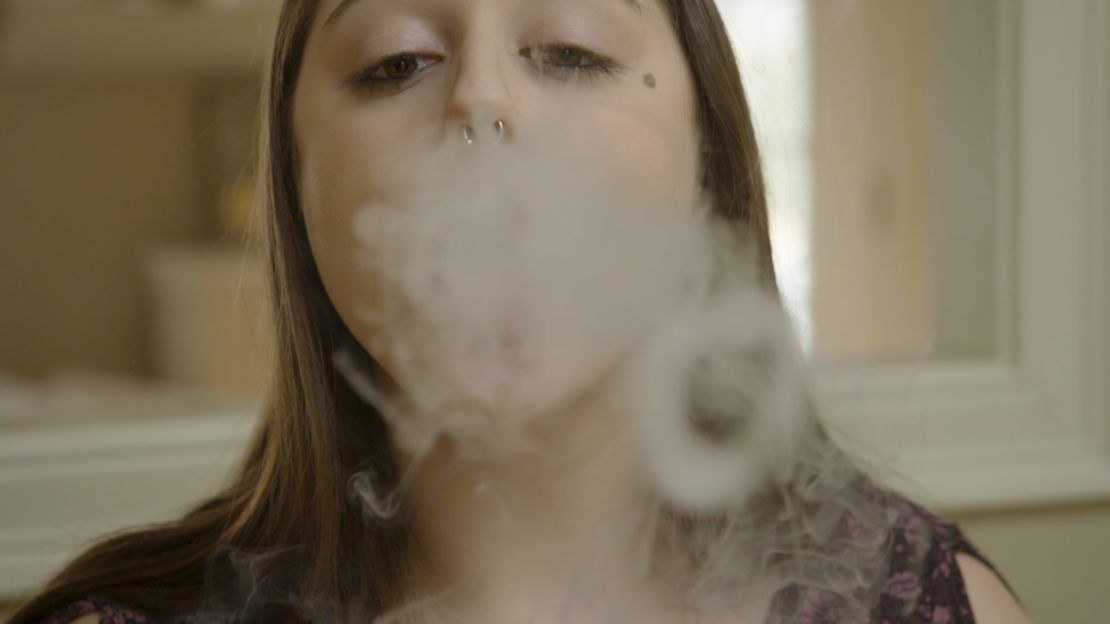Story highlights
Survey: 1.7 million high school students used e-cigarettes in previous 30 days
Vapor product supporters say their aim is to provide tools that adults need to quit smoking
A sharp spike in vaping and the use of e-cigarettes by students has grabbed the attention of the US Food and Drug Administration.
The rapid spread of the fad was flagged in a 2016 report from the US surgeon general. It cited a 900% increase in e-cigarette use by high school students from 2011 to 2015, and the 2016 National Youth Tobacco Survey noted that 1.7 million high school students said they had used e-cigarettes in the previous 30 days.
For middle school students, the number was 500,000.
Now, the alarming trend is prompting concerns that some companies are taking direct aim at teenagers by tailoring and marketing e-cigarettes and vaping products to younger users.
“No kid should be using any tobacco product,” FDA Commissioner Dr. Scott Gottlieb said.
“We’re going to be taking some enforcement actions very soon to target companies that we think are marketing products in ways that they’re deliberately appealing to kids,” Gottlieb told CNN Chief Medical Correspondent Dr. Sanjay Gupta.
Flavors ‘appealing to kids’
Analysts point out that flavors like tutti frutti, cotton candy and sour gummy worms are likely to attract some younger users to e-cigarettes.

Joseph Allen, assistant professor of exposure assessment science at the Harvard T.H. Chan School of Public Health, has conducted a study on the presence of artificial flavoring chemicals in e-cigarettes. “To me, these are products that are really appealing to kids. … Millions of kids are trying these e-cigarette products. Studies show that one in five eighth-graders that currently use tobacco products got there by starting with e-cigarettes.
“So these e-cigarettes are also a gateway for traditional tobacco use for many young kids,” he said.
There are warnings on the labels of some vape liquids containing nicotine that are pretty clear: “Nicotine is an addictive chemical; For use by adults 18 and older.”
But Bella Kacoyannakis, a 20-year-old from East Longmeadow, Massachusetts, who started vaping as a teenager, said that’s not going to stop her.
“I definitely think about … how it affects what I’m putting into my lungs, because I don’t really know too much about it. … I’m not even sure how it turns into vape. … But I haven’t been too concerned about it, obviously, because I’m still using it,” she said.
Advocate: Vape shop customers are adults
American Vaping Association President Greg Conley began doing advocacy work for vapor products in 2010.
The advocacy organization says it does not represent the industry and does not speak for it. The association takes sponsorships from independent vapor companies as well as donations from individual consumers.
“Our main concern is adults having the tools that they need to quit smoking. Young adults, if they are not smokers, they absolutely should not start using a nicotine product,” Conley said.
“Spend some time in a vape shop and see the customers that come in for these wildly named products. They are adults. They are over 25 years old, and they are the same type that watches ‘Family Guy’ on Sunday nights.
“It’s something that is a little lurid, appeals to adults. We’re not a country of serious, uptight people that just want straightforward products.”
Vaping invasion
As e-cigarettes invade high schools across the country, teachers like Jennifer Walden have found that students are even vaping during class.
Walden, of King Philip Regional High School in Wrentham, Massachusetts, recalled two students “seated in the back two desks in the corner. They had their hands kind of up … and they had a blue light coming in between their hands.”
Francis Thompson, the principal of Jonathan Law High School in Milford, Connecticut, is facing a similar problem. “(The) most popular form, it’s a Juul. It looks like a flash drive, it’s not, and the kids can just tuck it away when they’re done. So, how’re you going to know?” he asked.
A general lack of knowledge about e-cigarettes is also problematic, school administrators point out. “The kids that I talk to believe that there’s nothing in there that’s dangerous. They don’t think there’s anything more than water,” Thompson said.
That’s not the case, Gupta said. “It’s not water. It’s called e-liquid, and when heated by the coil, it changes to an aerosol.”
What is e-liquid?
Dr. Ana Navas-Acien, a professor of environmental health sciences at the Mailman School of Public Health at Columbia University, recently released a study measuring metal levels in this aerosol.
The research found chromium, nickel, zinc and lead, Navas-Acien said.
“Comparing what was initially in the liquid, that was very, very tiny amount (of lead) practically undetectable. But after the e-liquid was heated through the e-cigarette device, lead levels were then 25 times higher,” she said.
“There is no safe level of lead.”
Without standard regulations requiring uniform warning labels, people aren’t always fully aware of what they’re consuming.
When Kacoyannakis read for the first time the warning label on her Juul box, she was enlightened.
Follow CNN Health on Facebook and Twitter
“It says ‘California Proposition 65 warning: This product contains chemicals known to the state of California to cause cancer or birth defects, or other reproductive harm.’ OK, I never read that before. Doesn’t make me feel great, but that’s what it says, so, I guess, yeah, that is the only warning. But that’s probably the only warning that needs to be on there.”
Did the warning change her mind about vaping? “No, definitely not,” she said.





